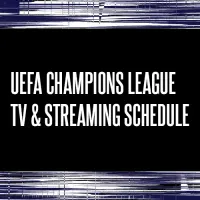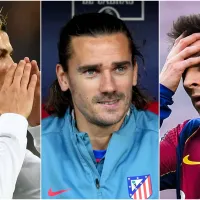On Monday, The Financial Times newspaper reported that the second-tier North American Soccer League (NASL) has launched a legal case against the United States Soccer Federation (USSF) regarding first division sanctioning.
In a nation without promotion and relegation, USSF is able to create arbitrary standards with the first-tier league MLS to determine what D1 standards should be. While the USSF is the governing body of soccer in all its forms in the United States, it maintains a very cozy relationship with MLS through its marketing arm, Soccer United Marketing (SUM), which works closely with US Soccer for promotion and television rights purposes.
According to The Financial Times article, proposed changes have been issued in which to qualify for Division 1, a league would need 16 teams, up from 12 under 2014 rules, per NASL. It would also have to meet a requirement that 75 per cent of its teams be based in cities with a population of more than 2 million people, up from 1 million. It adds that the requirement for all team stadiums is to meet a minimum 15,000 seat capacity for the entire league to qualify for Division I, which NASL argues is “highly unreasonable.”
“Doubling the population criteria now is an anti-competitive bait and switch, with the purpose of entrenching MLS’s monopoly position at the very time when the NASL is threatening to become a significant competitor,” Jeffrey Kessler, an antitrust and sports attorney representing NASL, wrote in a letter to Sunil Gulati, head of US Soccer.
“The financial damage is significant,” Mr Kessler told the FT. “Simply put, the actions by US Soccer are hindering the league’s earnings potential with advertisers, broadcasters and other business partners, who will pay top dollar only for Division I, regardless of the quality of play or passion of the fans,” he said.
The NASL claims its second tier status makes it harder to gain access to world tournaments and attract players, team owners and quality referees. Division I status would enable the league to command more in merchandising rights, too.
On legal grounds within the closed system of North American soccer, it would appear the NASL has a strong case. City size and minimum stadium sizes are necessary at the D1 level but requiring a metro area population of 2 million for 75% of the teams and allowing no exceptions to a requirement for 15,000 seater stadiums would seemingly make it impossible for any league to challenge MLS’ monopoly.
On stadium size, AFC Bournemouth (in England) would not have been able to take their place in a USSF run D1. Regarding city size, it’s worth noting that the fourth largest UK Metropolitan area in terms of population, Leeds/Bradford, has not had a Premier League club since 2004 and for several seasons did not even have a second division club. Yet English soccer lived on. It could be argued the top division would be strong with Leeds United in the league, but the league has not been hurt by having smaller markets such as Norwich or Burnley (both of whom would be seen as clear D2 or D3 markets by this USSF standard) in the top flight.
However, another side to this story exists. Even for this 2015 season, NASL did not meet the Division 2 standards set by the USSF that have been in place since 2010, requiring a waiver for not having a west coast team and for the stadiums in Atlanta and Edmonton not meeting minimum requirements. However it is very true these standards are quite arbitrary in their conception and implementation. But NASL agreed to those standards when sanctioned as a Division 2 league provisionally in November 2010 at the same time that USL, which was also seeking D2 status, opted to drop to D3 where less stringent requirements were in place. NASL’s decision to accept those D2 standards drove up the costs of running a club at the lower-division level and increased travel costs. It could be argued that USL ultimately benefited from this as the clubs that opted for USL, which included several former D2 clubs, have saved money and could be at the second division level once again soon.
Today, I have heard from various sources that NASL might have needed to file this lawsuit because they are finding sponsorhips and expansion opportunities to be limited. USL, which is still a D3 but has announced plans to seek D2 status, has been able expand rapidly into many second-tier markets the NASL could have added if they were interested in staying at that level in the pyramid. I have also heard that NASL owners are largely split on the future course, with some wanting to focus on entertainment and marketing opportunities in their local markets while others want to see the league built out across the continent in a manner that makes it a major league.
The ramifications from this lawsuit may include:
– NASL wins the case but several owners of clubs in medium sized markets who have already maximized revenue and sponsorship potential, such as San Antonio, choose to leave and join USL. For San Antonio in particular, this makes sense as they will have as many as five USL clubs next season within bus driving distance of the Texas city. Clubs such as Carolina cannot compete financially with the bigger market teams without some significant revenue sharing and they either will leave for USL or force a change in NASL’s structure that makes it more like an American pro league and less like a foreign one.
– NASL wins the case but cannot compete with MLS outside of the New York market where the Cosmos brand still has the cache that New York City FC is unlikely to ever create. Clubs such as the Tampa Bay Rowdies, limited by stadium size, cannot compete effectively with Orlando City just 70 miles down the road and the current ownership eventually loses interest and either sells or folds the club.
– NASL wins the case and teams such as Indy Eleven and Jacksonville Armada — with fantastic local support —then receive the political support necessary to get new stadiums. This boosts NASL and the league is able lock down its markets, and competes with MLS head-to-head.
– NASL wins the case, gets D1 status and one or more MLS owners seeing the independent club model of NASL choose to abandon the older league. This is highly unlikely but could happen should the D1 designation for MLS become less valuable.
– USSF wins and NASL accepts Division 2 but USL is also granted D2 status and the two battle head-to-head for
legitimacy. USL now has an affiliation with MLS so it becomes a battle between a “feeder-league” and an independent one.
– USSF wins and NASL dissolves without proper financial backing and national sponsorships. Several clubs go to USL and MLS cherry picks from the rest. Those left over go out of business. This seems to be the scenario many think will play out but I am not sure it is the most likely one. Then again, as a former NASL employee, I still want to see the league survive and would hate for this to happen, so maybe that clouds my perception.
What do our readers think will become of this? Let us know in the comments section!













